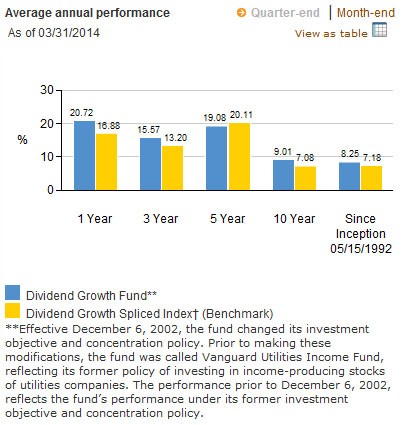Dividend Funds
Post on: 16 Март, 2015 No Comment

I remember the first time I opened my brokerage account online to start trading. I had $19,500 that I just transferred from a line of credit and I felt like a kid in a candy store with $1M in my pocket ;-). Even though I had a solid background in finance and had friends working close to the stock market, I still felt the urge to buying stocks. This motivation was fuelled by greed and the possibility of making a profit and being a winner on the stock market battlefield.
Starting to invest is quite motivating but as a young investor, you must put greed and hype aside and start by looking for sound investments. As I previously mentioned, I think that one of the best ways to start for a young investor is to look at ETFs and mutual funds. Later on, I’ll explain when and how to pick individual dividend stocks. It’s not only a matter of dollars but it is also a matter of knowledge. Buying ETFs or mutual funds will protect most beginner investors from making big mistakes (such as chasing high yields without looking at the payout ratio). However, buying such investment vehicles doesn’t mean that you will necessarily make good moves. This is why there are several things to look at before picking the right ETF or mutual fund.
The very first thing to look at and the most discussed is definitely the fees. They can be obvious (trading fees, Management fees) but they can also be hidden (back end fees). Let’s take a quick look at the different types of fees so you can understand them:
This is the commission fee required by your investment broker to process your transaction. Commission fees apply at the purchase and sale of an investment. They are usually charged on stocks and ETFs while they may not when buying bonds or mutual funds (mind you, it doesn’t mean that your transaction is free either!).
The best way to avoid this type of fee is either trading mutual funds (with no transaction fees) or to select a broker with low commission rates (such as Zecco which offers transactions as low as $5 in the USA and Questrade with trades between $4.95 and $9.95 for Canadian).
This is the cost to manage your investment. Whether you buy an ETF or a mutual fund, you do not control what is inside. Therefore, you have to pay a portfolio manager to do the job for you. ETF fees are around 0.40% to 0.60% while dividend mutual funds can charge between 1.5% and 3% (and sometimes higher). While I will discuss the importance of management in another post, let just say that paying 3% for any type of investment is very expensive.
This type of fee will usually show up with mutual funds. If you don’t stay in the same product (or family of fund) for X number of years, there is a fee attached to exit fund. If you are about to purchase any type of mutual funds, make sure you can sell them whenever you want.
Trading Options
Since we are talking dividend strategies for investors, I would suggest looking at the following trading options before making any choices.
First off, I think you are better off choosing to reinvest the dividends and any profits generated by your investment product. It is a similar system to the DRIP for individual stocks. This allows you to increase the amount of units (with no transaction fees) by using the profit (interest, dividends or capital gains) generated by your holdings.
The second trading option is periodic investments. This is usually allowed for most mutual funds and some ETFs offer it as well. Periodic investing is a great way to continue to build your portfolio and using dollar cost averaging at the same time. This will help you build a great saving habit and before you notice, you will have $5,000 or more invested in the market.
Diversification
As a young investor, you might be tempted to look at the best performing ETFs or funds for the past 5 years and pick among them. However, it is important that you also account for diversification in your choices. One fund that performed really well in the past 5 years might be heavily invested in a specific sector or commodity. You don’t want to be concentrated since you don’t know what will be the “next big thing” on the market. Going for diversification among sectors and also geography may be a good idea. For example, the dividend world is pretty concentrated in financials on the Canadian market. Adding US dividend companies could be a really good idea.














